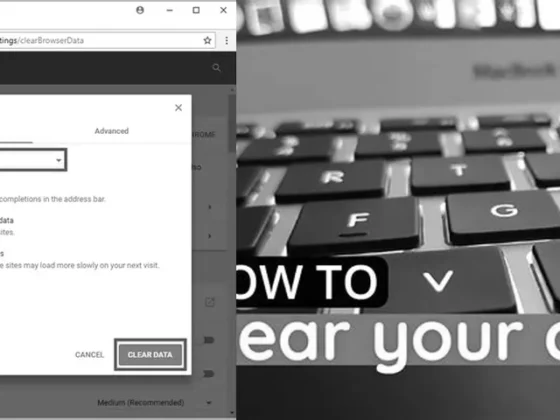Why Won’t My Watch Work with a New Battery? Unveiling the Mysteries of Watch Mechanics – Is your watch refusing to cooperate even after you’ve given it a fresh battery? Frustrating, isn’t it? Well, fear not, because we’re here to unravel the mysteries behind this common conundrum. In this article, we’ll dive into the intricate world of watch mechanics and explore the various reasons why your timepiece may not be ticking despite a new battery. From incorrect battery installations to internal component failures, we’ll cover it all. So, grab a cup of coffee, sit back, and let’s find out why your watch is playing hard to keep time.
Understanding the Intricacies of Watch Mechanics
Watches are intricate devices that rely on a symphony of small, precise components working in unison. The heart of many modern watches is a quartz crystal, which oscillates at a constant frequency when powered by a battery, providing the timepiece with its timekeeping accuracy. When a watch ceases to function even after fitting a new battery, it can be both perplexing and frustrating.
Incorrect Battery Installation: A Primary Culprit
Identifying Installation Errors
One of the simplest explanations for why a watch might not work after a battery change is incorrect installation. A watch battery must be placed in the correct orientation, with the positive and negative sides aligned with the watch’s contact points. If the battery is reversed, the watch will not function. Furthermore, the battery compartment often has a delicate clip or contact that must be secure for the circuit to complete.
Actionable Tips for Correct Battery Installation
- Check the battery’s orientation: Ensure the positive (+) side is facing the correct direction as indicated by the watch’s battery compartment.
- Inspect the battery compartment for any signs indicating the correct placement.
- Make sure the battery is seated properly and that any clips or contacts are securely fastened.
Loose Connections and Short Circuits
Diagnosing Connection Issues
Loose connections can occur if the battery is not held firmly in place, causing intermittent power supply issues. Additionally, if the back of the watch is not properly secured after the battery change, it can result in a loss of connection. A short circuit, on the other hand, can happen if a conductive object unintentionally bridges the electrical contacts within the watch, causing the power to bypass the necessary pathways.
Solutions for Connectivity Problems
- Ensure the watch back is tightly closed, as a loose back can cause power disconnections.
- Inspect the interior of the watch for any foreign objects or debris that could cause a short circuit.
- Carefully clean the battery compartment and contacts with a soft brush to remove any corrosion or dirt.
Internal Component Failures
Recognizing More Serious Issues
Sometimes, the problem may lie deeper within the watch’s mechanism. Gears might be worn out, or the quartz crystal could be damaged. In such cases, a new battery will not solve the issue, and the watch may require a professional assessment to identify and repair any broken components.
When to Seek Professional Help
- If after troubleshooting, the watch still does not work, consider taking it to a certified watchmaker.
- Look for signs of physical damage or listen for unusual sounds from the watch, which could indicate internal problems.
Resetting Your Watch Post-Battery Change
Simple Steps to Restart Your Timepiece
After inserting a new battery, a watch might need a little nudge to get going again. Gently swinging the watch or winding it (if it has a mechanical component) can jumpstart the movement. This action can help to reset the watch’s internal mechanism and get it ticking once more.
Troubleshooting Techniques to Revive Your Watch
- Swing the watch gently from side to side for a few minutes.
- Use the watch’s crown to wind it slightly if applicable.
- Press any reset buttons if your watch has a digital component or features that require synchronization.
Preventive Measures and Maintenance
Understanding Battery Lifespan
While most watches give years of reliable service, understanding their maintenance needs can prevent unexpected stops. A common reason for a watch not working could simply be an expired battery. It is a good rule of thumb to replace watch batteries every two years. However, quartz watches can often run for three years or longer without needing a battery replacement, depending on usage and the watch’s design.
Best Practices for Watch Care
- Regularly check your watch for signs of a low battery, such as a slowing second hand or dimming display.
- Keep your watch clean and free from dust, which can affect battery life and watch functionality.
- Store your watch in a dry, temperate environment to avoid damage to the battery and internal components.
Conclusion: Ensuring Timeless Performance
Dealing with a non-functioning watch after a battery replacement can be disheartening, but understanding the potential causes and solutions can help alleviate the issue. From ensuring correct battery installation to diagnosing more complex internal issues, the right approach can bring a timepiece back to life. Remember that regular maintenance, coupled with a proactive approach to battery replacement, can ensure that your watch continues to function with precision and reliability.
By appreciating the delicate balance of components within your watch and taking the necessary steps to maintain its functionality, you can enjoy the timeless performance that these remarkable devices are designed to deliver.
FAQ & Related Questions about Why Is My Watch Not Working With A New Battery?
Q: Why did my watch stop working after changing the battery?
A: There could be a few reasons for this. The battery may not have been installed correctly, there could be a loose connection or short circuit within the watch, or it could be a sign of a more serious issue with the watch’s internal components.
Q: How do I reset my watch after replacing the battery?
A: To reset your watch after replacing the battery, you can try removing the battery for a few minutes and then reinstalling it. This can help reset any temporary issues that may be causing the watch to not work properly.
Q: Can I change a watch battery by myself?
A: Yes, you can replace the battery in your watch yourself, depending on the type of watch. Some watches have a back that can be easily removed using a small tool, while others may require professional assistance.
Q: How do I force a watch to restart?
A: To force a watch to restart, you can try holding down the power button or a combination of buttons for a few seconds until the watch powers off and then powers back on. This can help resolve any temporary software or hardware issues that may be causing the watch to not work properly.
Q: Why won’t my watch turn on?
A: There are several possible reasons why your watch won’t turn on. It could be due to a dead battery, a faulty or non-compatible charger, the watch being in Power Reserve Mode, or a frozen display. Checking these factors and troubleshooting accordingly can help resolve the issue.


